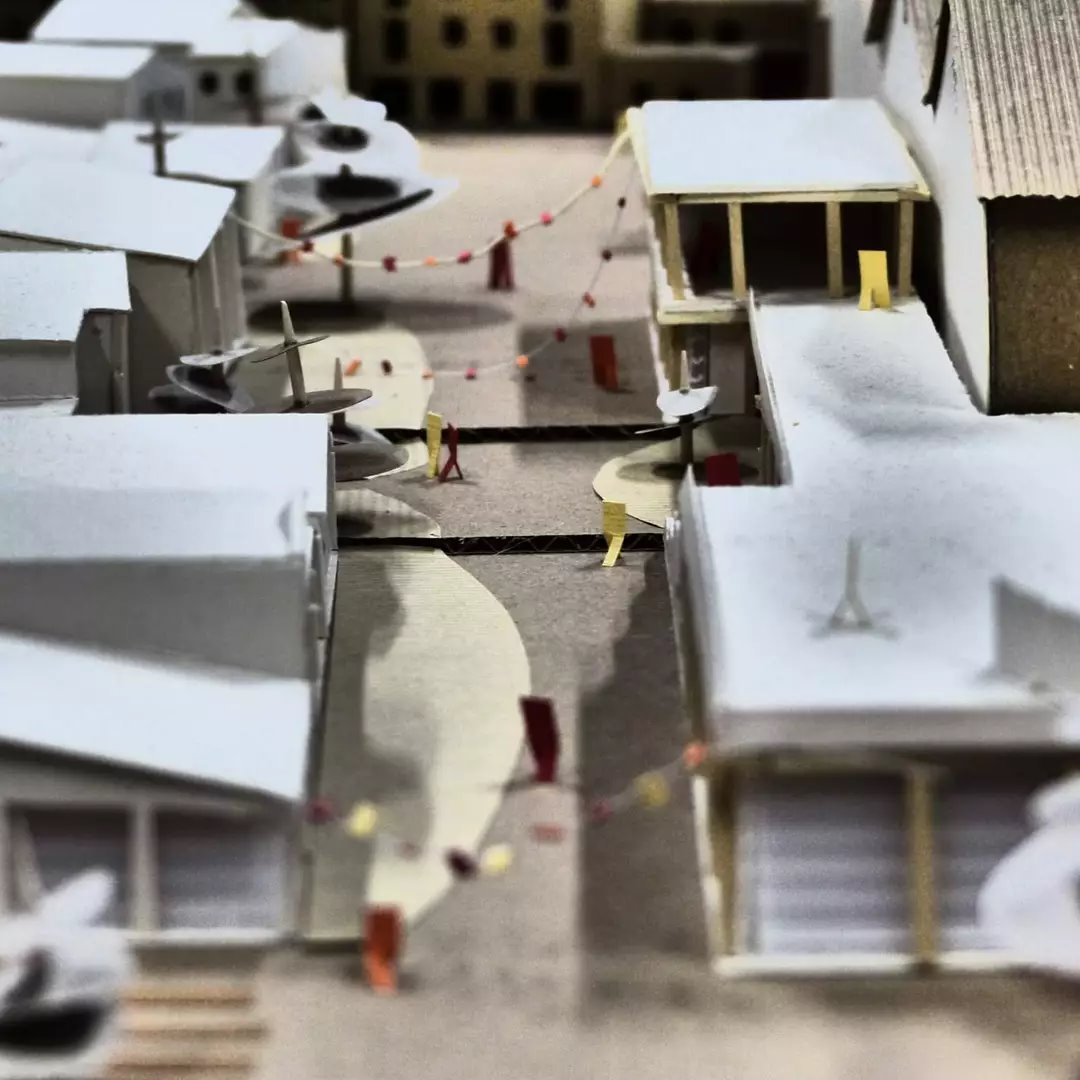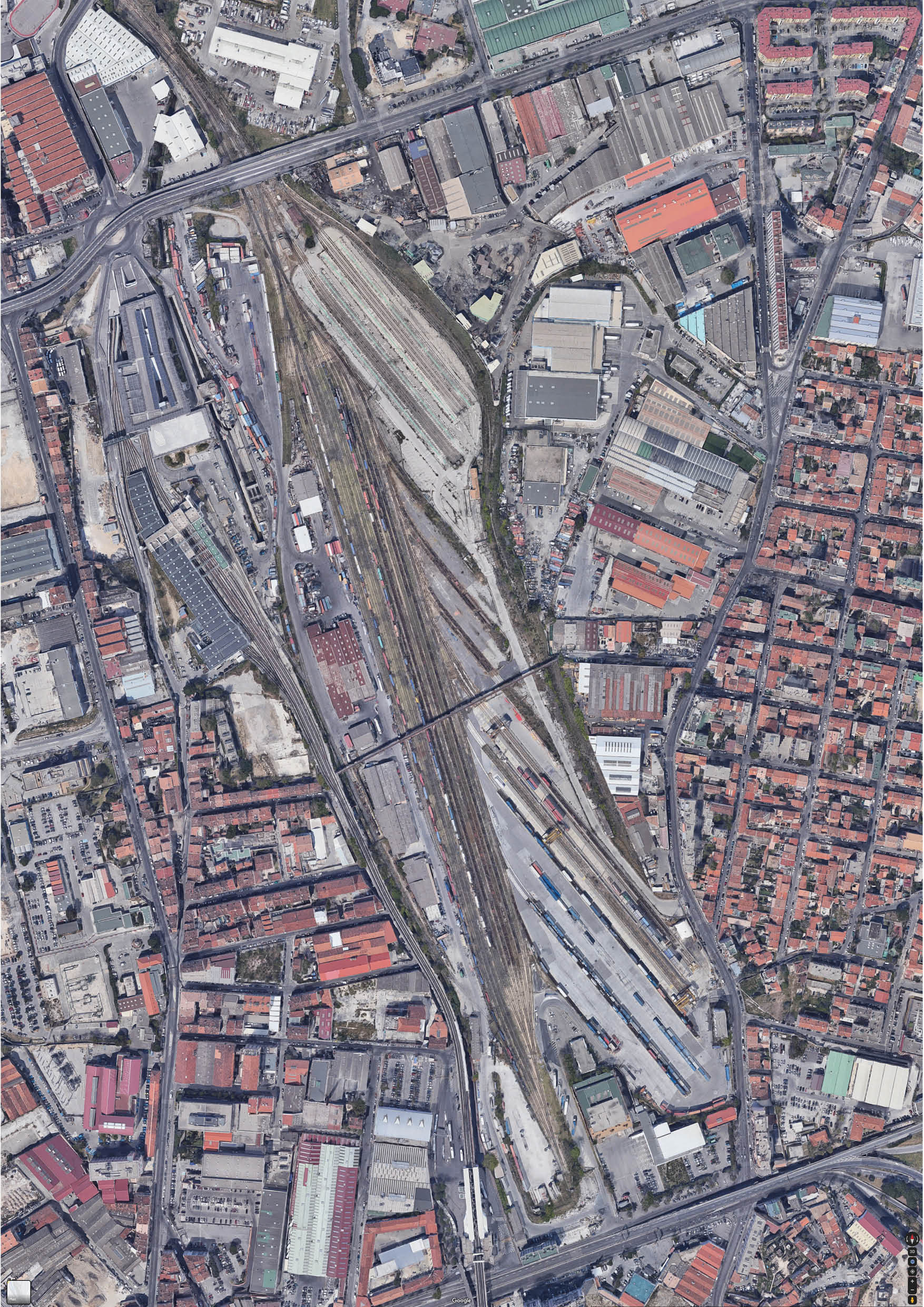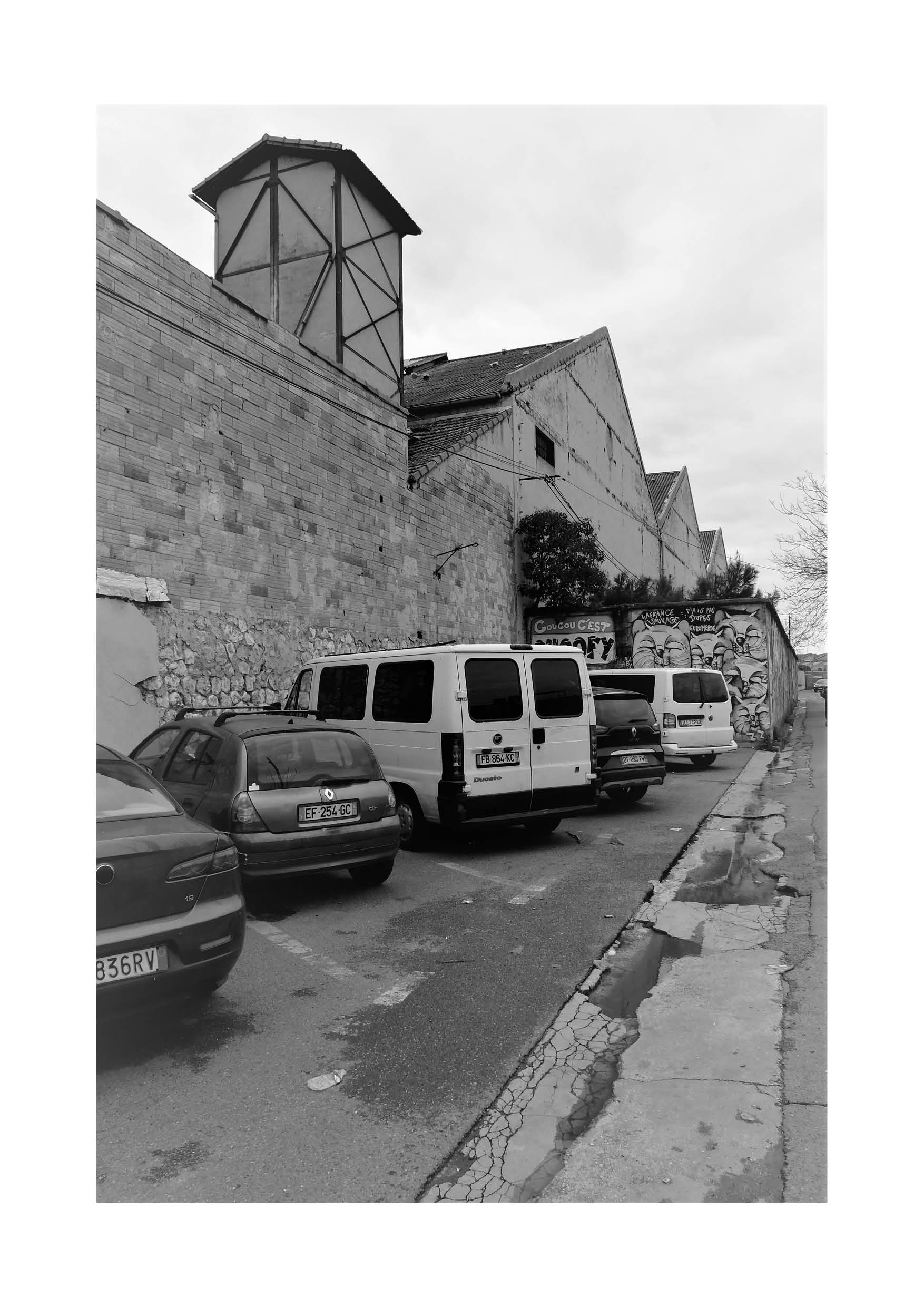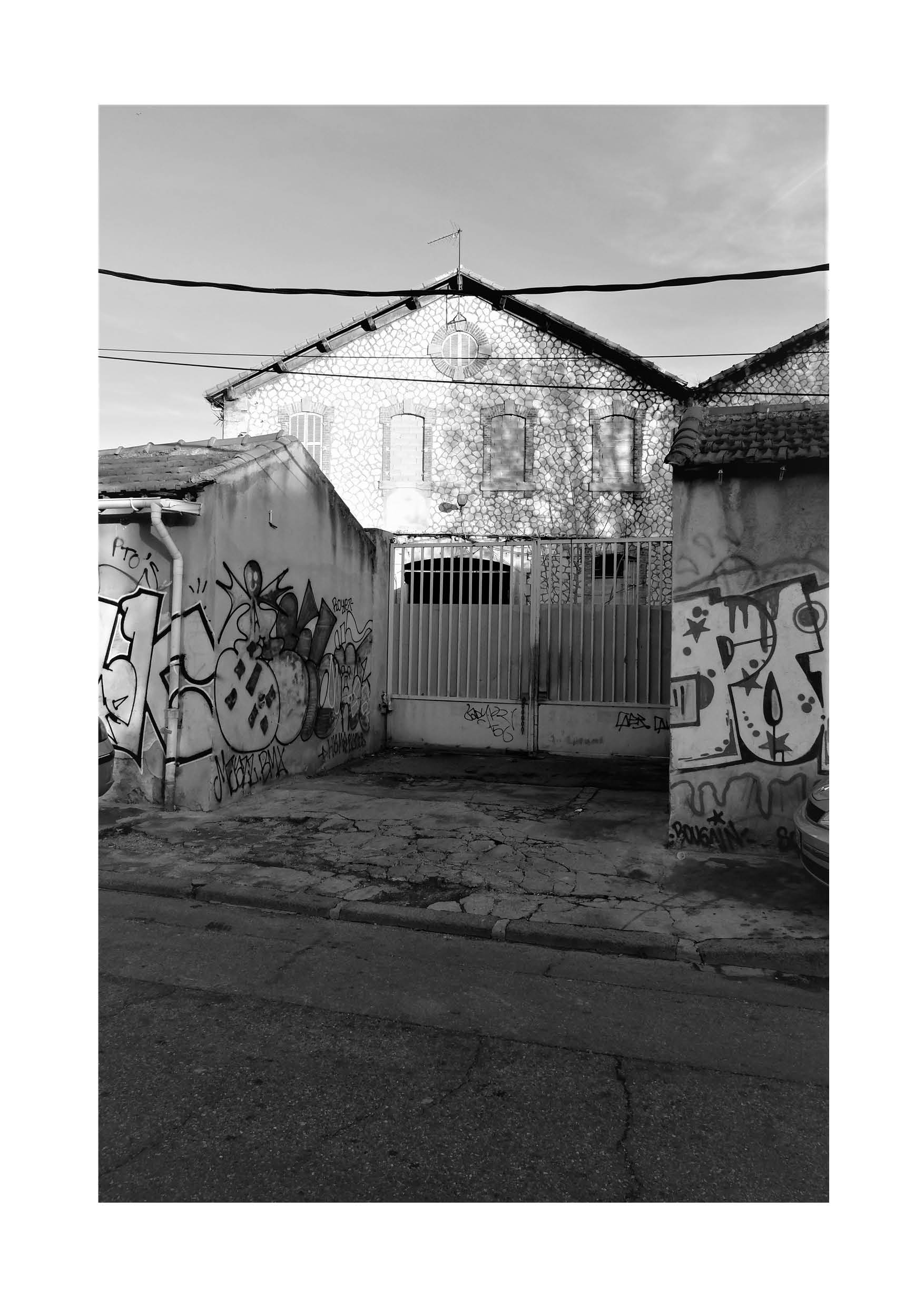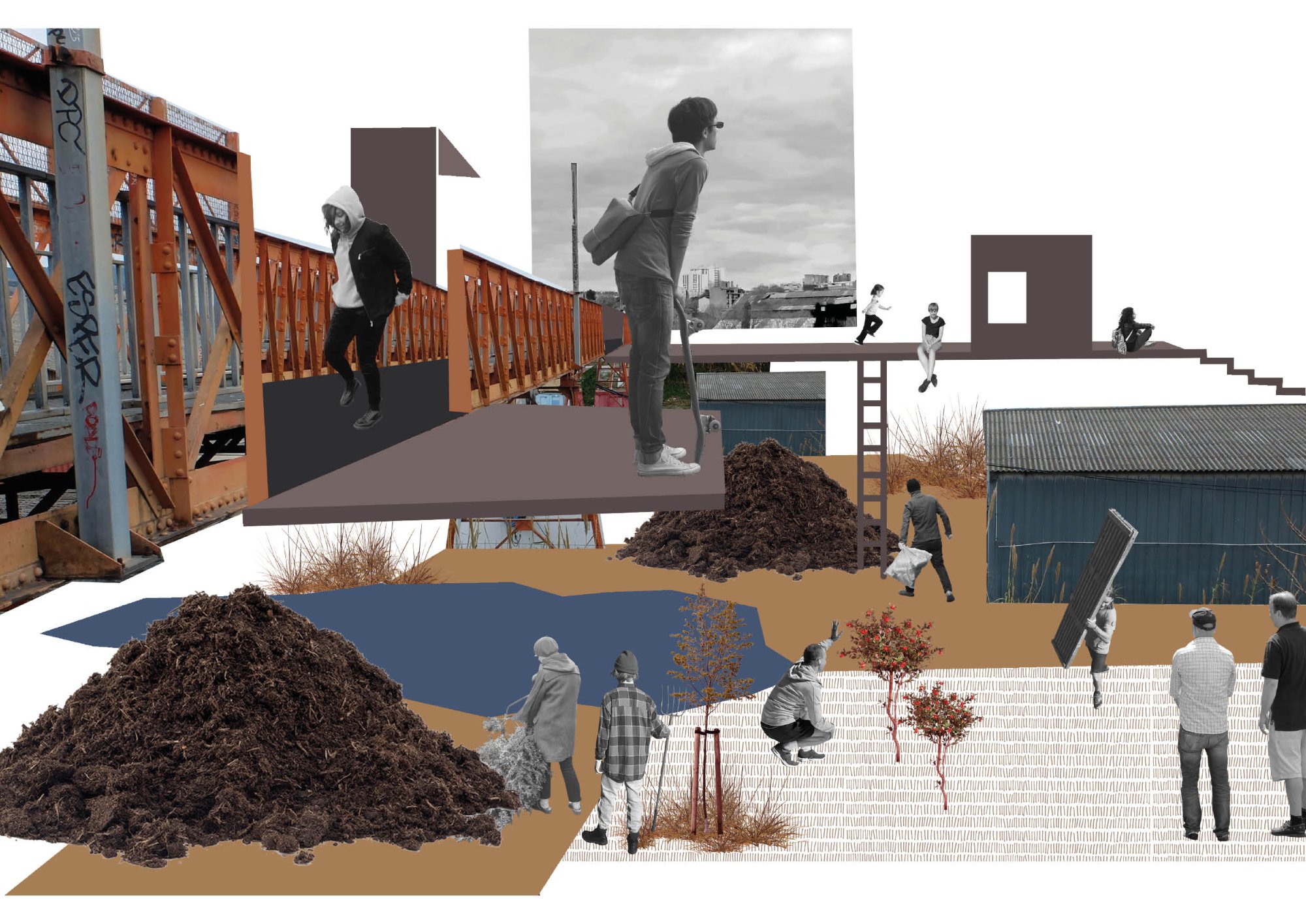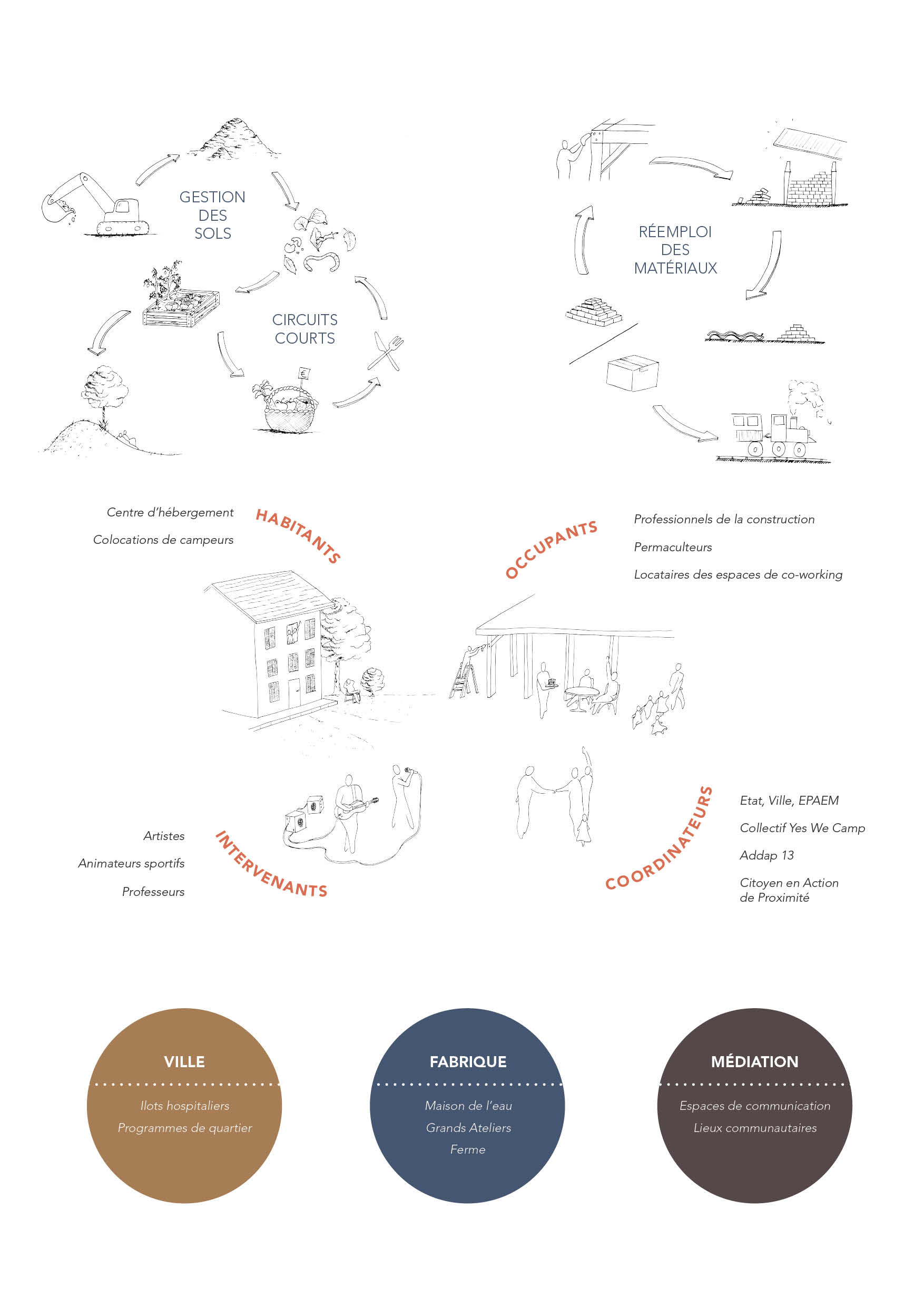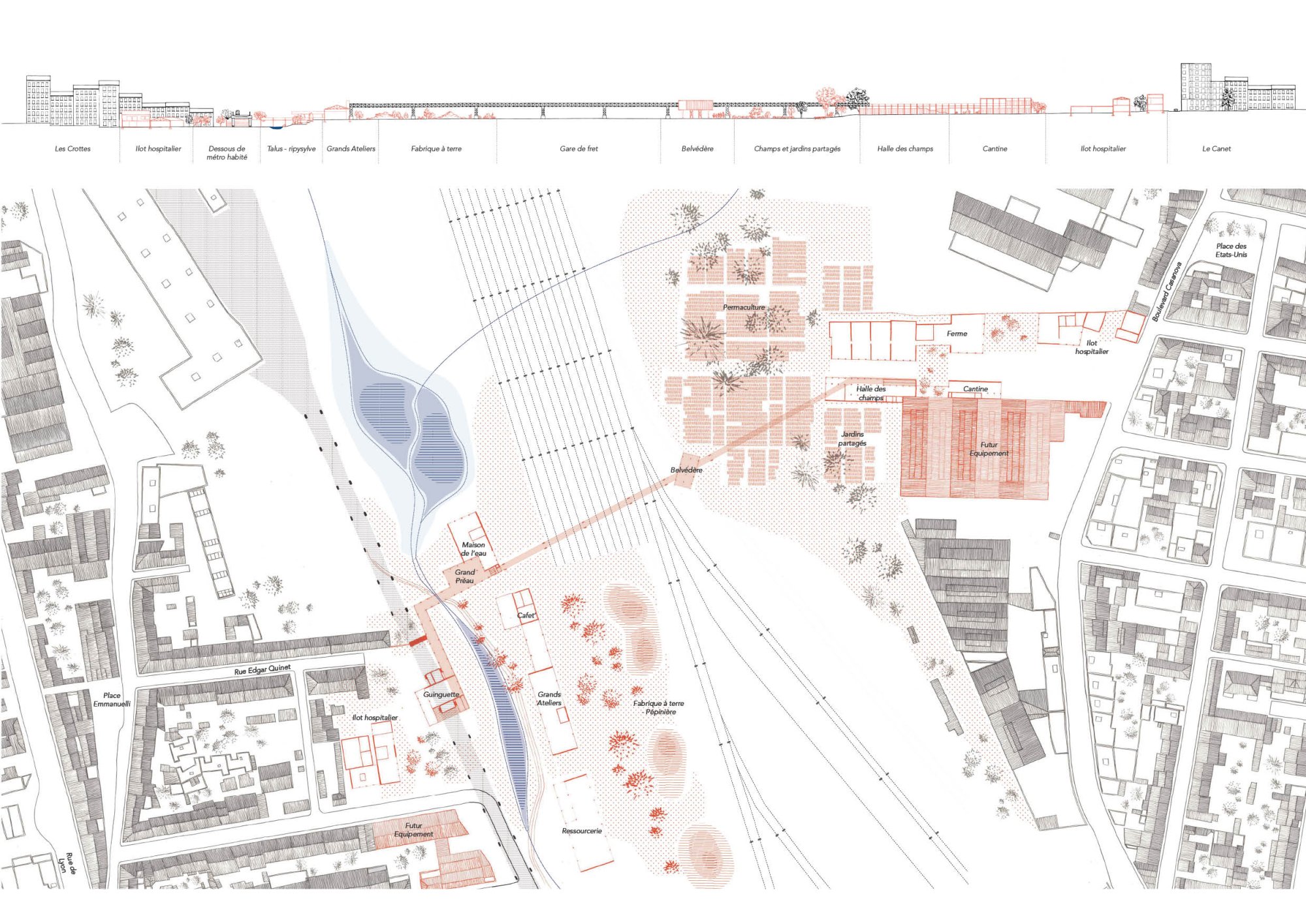Adèle Briole
LA PASSERELLE DES POSSIBLES - Préfiguration habitante du Parc des Aygalades dans l’arrière-port marseillais
A la jonction des 14 et 15e arrondissements marseillais, un secteur d’arrière-port industriel tombé en déshérence. Dans un paysage urbain violent marqué par les autoponts, les enclaves parcellaires et les hangars en friches, les noyaux villageois historiques des Crottes et du Canet subsistent tels celui des irréductibles gaulois. Une micro-économie de la débrouille y fleurit, et colore ponctuellement l’asphalte des rues. On s’y accommode comme on peut des taux de pauvreté et de chômage parmi les plus élevés de la ville, au sein d’une population issue de diverses vagues migratoires.
En 2007, un son de cloche se fait entendre : l’opération tentaculaire Euroméditerranée souhaite investir les lieux, dans la continuité de son premier chapitre de requalification des franges portuaires de la ville. Un masterplan ambitieux voit le jour : corniche emblématique sur le littoral, vastes opérations immobilières sur les emprises industrielles et implantation du parc des Aygalades sur l’actuelle gare de fret du Canet.
Il semble intéressant de se placer à la rencontre entre ce projet institutionnel, qui est une chance pour le quartier, et les ressources territoriales déjà en place. Face à un masterplan qui peut sembler déraciné, on va chercher à travailler de l’intérieur pour aborder des notions de temporalité et de phasage, d’implication des populations en place dans la mutation de leur quartier, et de respect du patrimoine formel et informel qui fait l’identité du lieu.
La mutation de la gare du Canet nous offre un formidable cas d’étude pour ces questions. La temporalité est au cœur des réflexions sur une zone de 14 hectares dont le foncier sera libéré en deux temps : 2023 pour les parties nord et sud-ouest du secteur, et quelques années plus tard pour le secteur sud-est. L’investissement des lieux peut ainsi être envisagé dès 2023, et la gare du Canet peut devenir un véritable terrain d’expérimentation sur la renaturation d’une gare industrielle, tout en renouant les liens entre les noyaux villageois qui ont été scindés au moment de son installation.
Un élément nous paraît extrêmement stratégique à la croisée de ces enjeux : la passerelle piétonne du Gauchet, véritable monstre de fer rouge de 240 mètres de long, seul franchissement possible du plateau ferroviaire à l’heure actuelle. Dans une première phase où le ferroviaire est encore en fonctionnement et le parc entièrement à dessiner, elle peut servir de point d’appui au démarrage du projet, pour en devenir le trait d’union et d’appropriation.
Ce projet est celui d’une passerelle télescopique, d’une passerelle habitée, qui noue un premier lien avec le terrain, en donnant accès à des secteurs stratégiques où « démarrer les choses » autour de la révélation d’un cours d’eau, du traitement des sols pollués, de la question de l’agriculture urbaine, ou encore de la mise en place d’une ressourcerie. Autour du développement d’un écosystème qui permette au parc des Aygalades de prendre vie, d’en faire un parc habité et habitant, un parc chargé de l’histoire du site et d’imaginaires vibrants.




